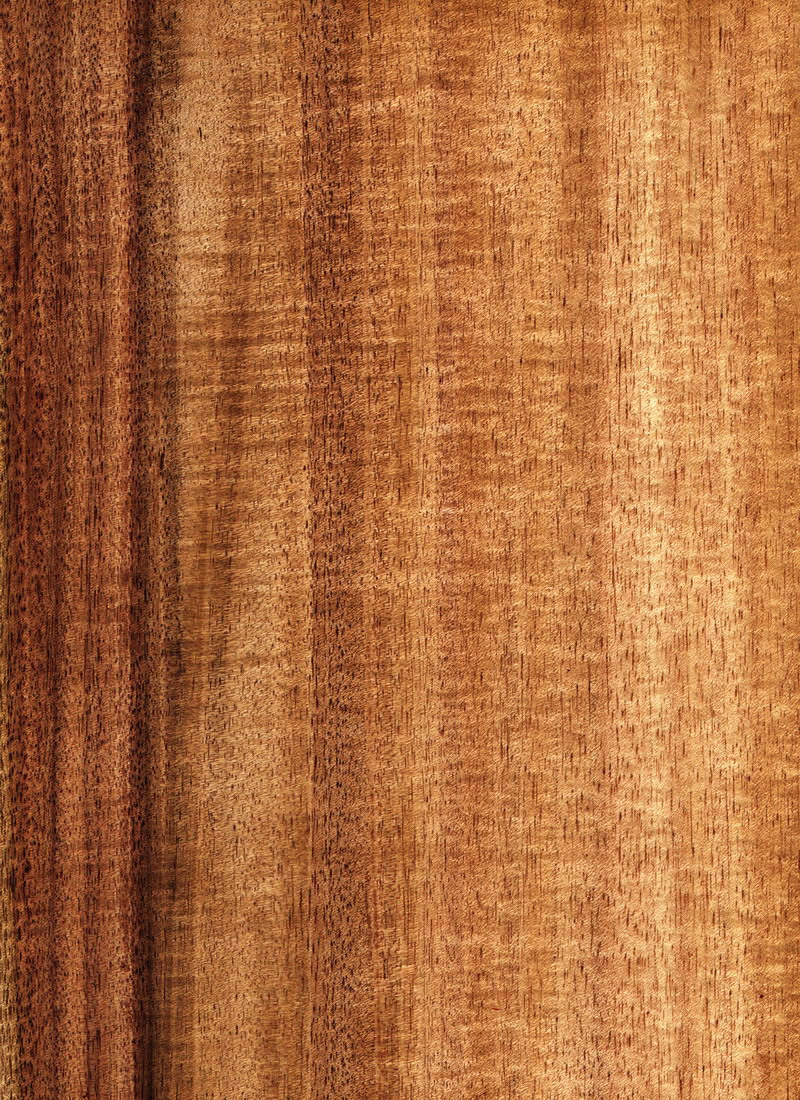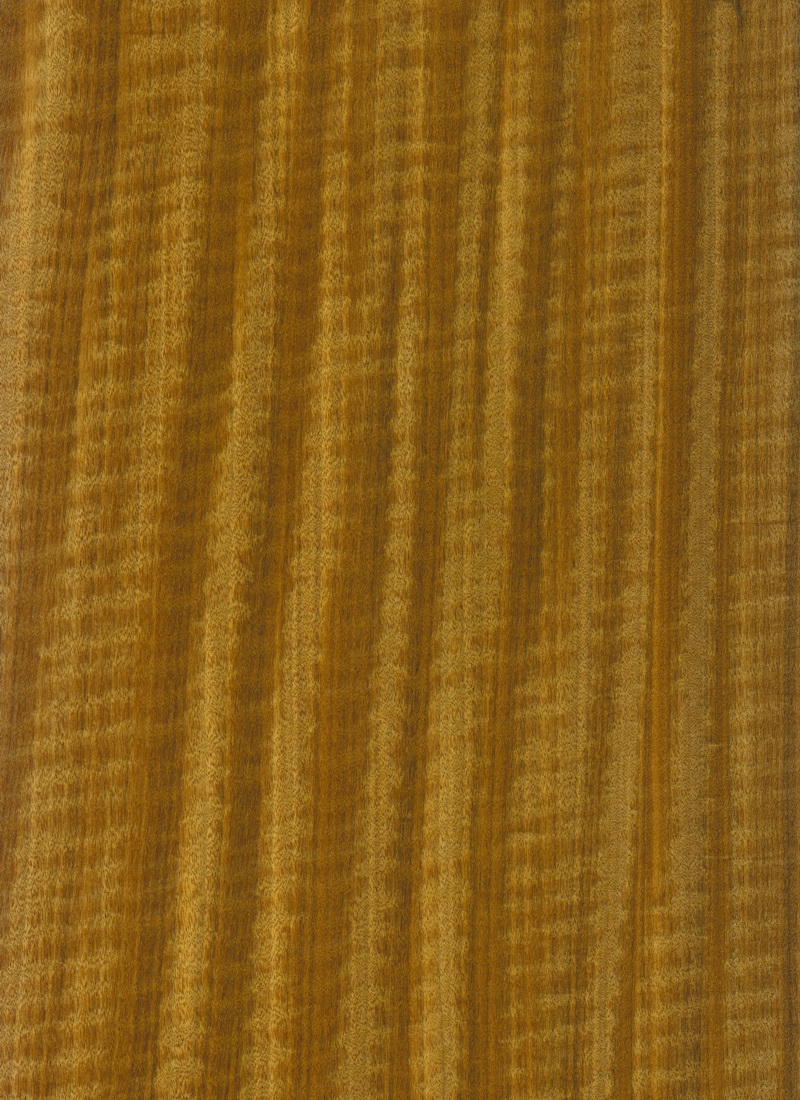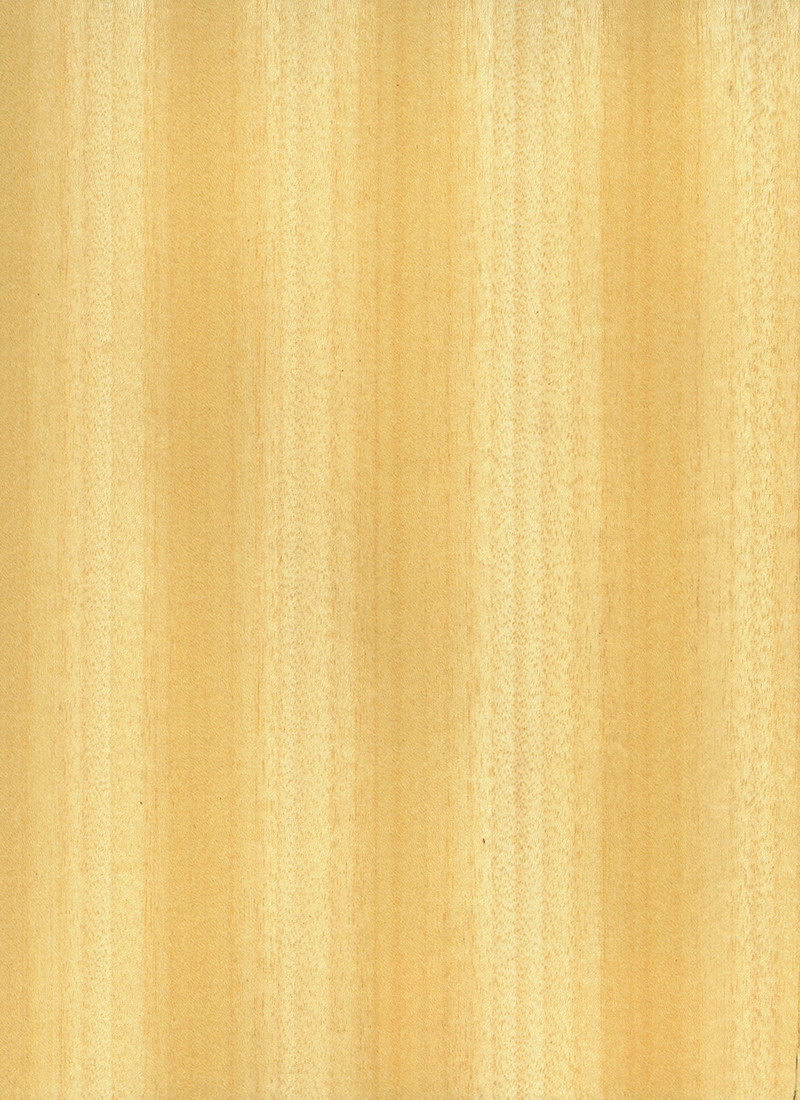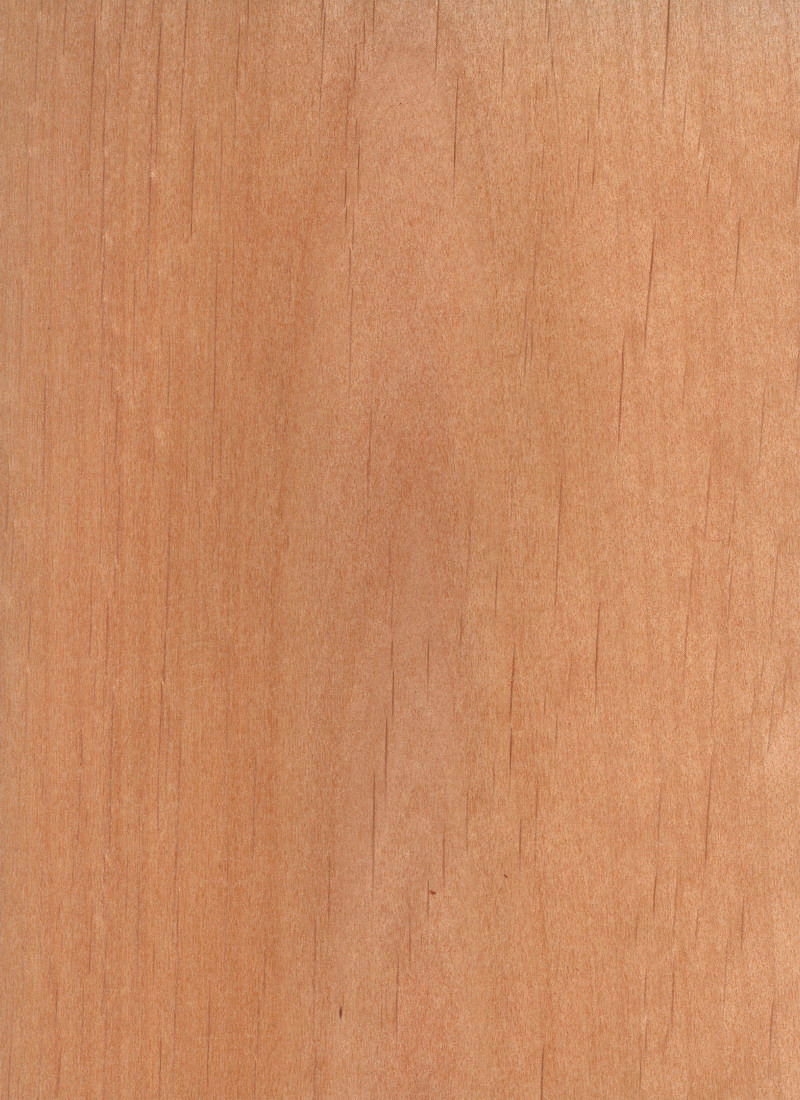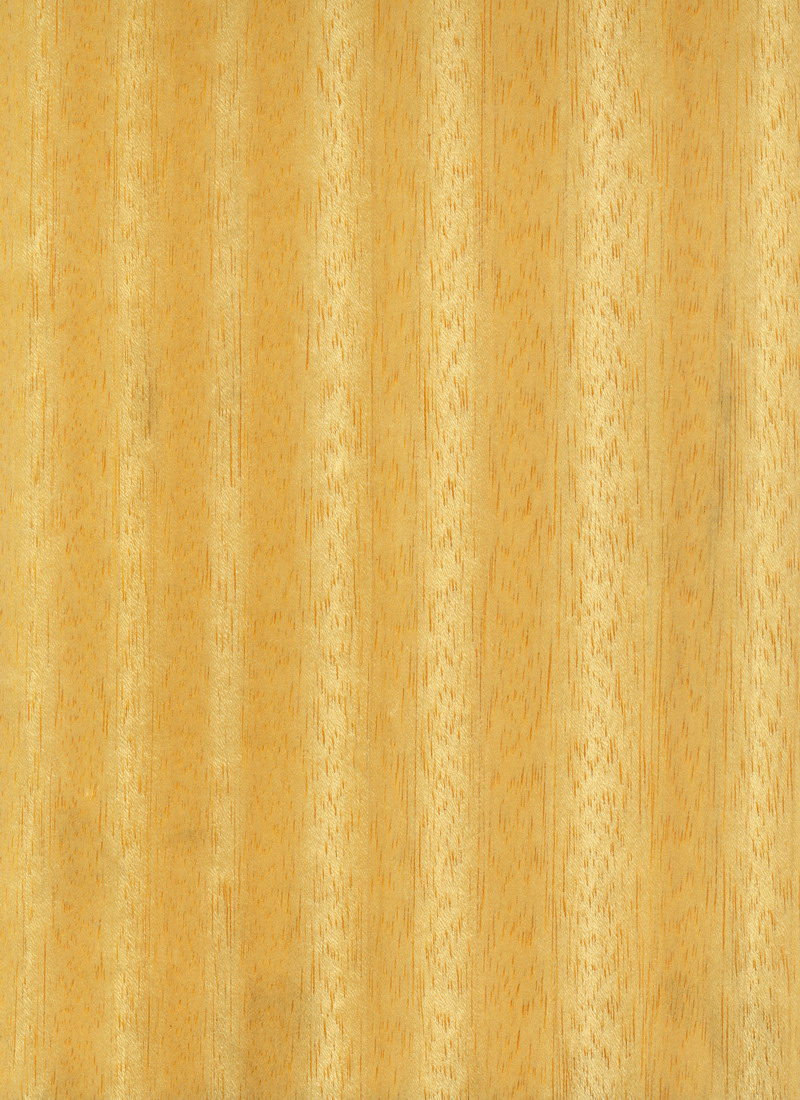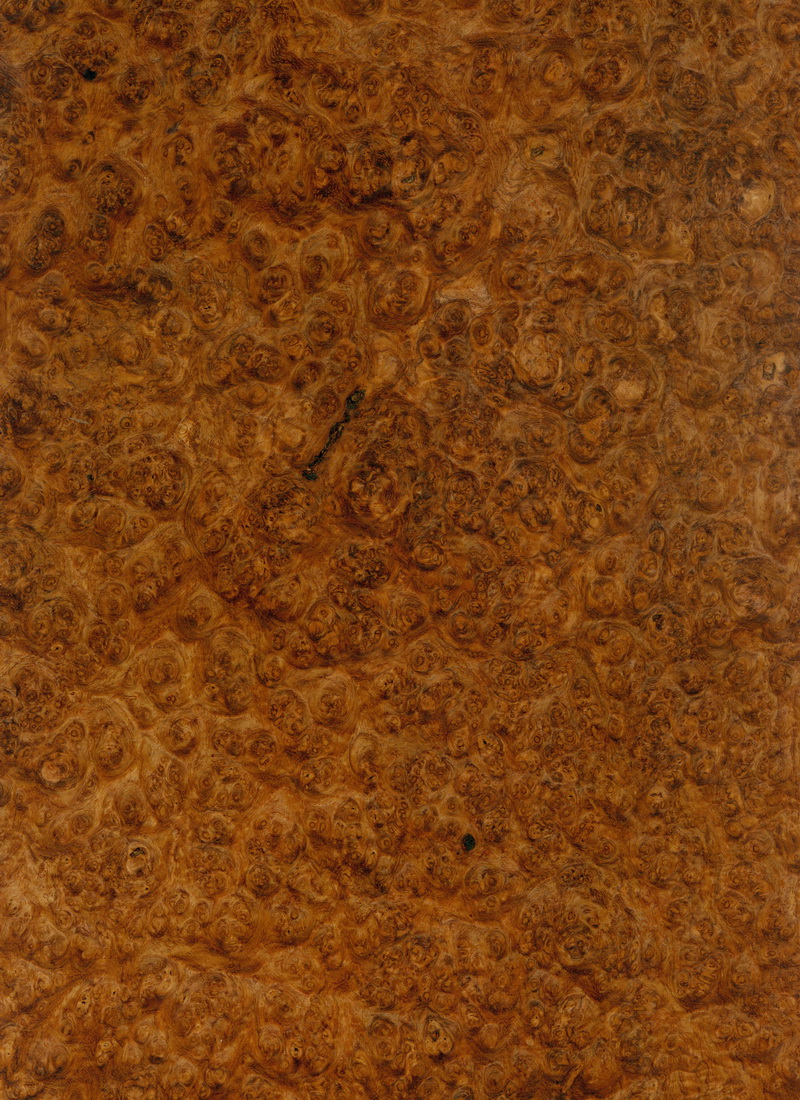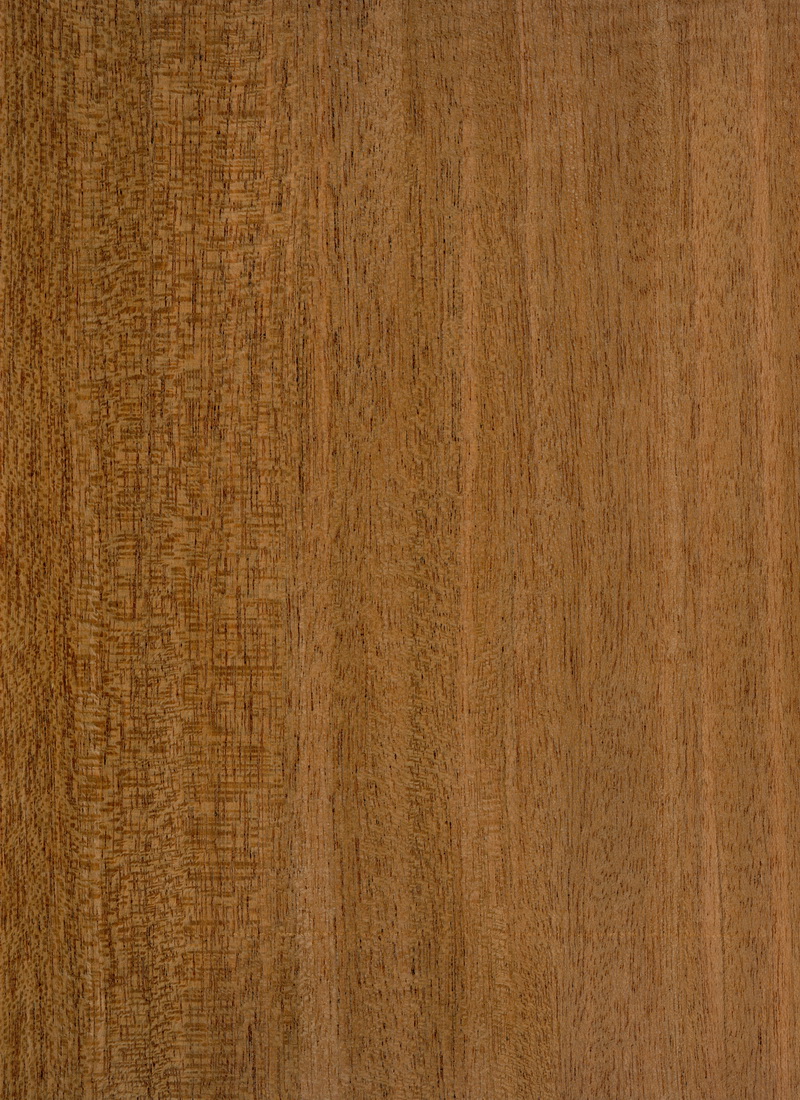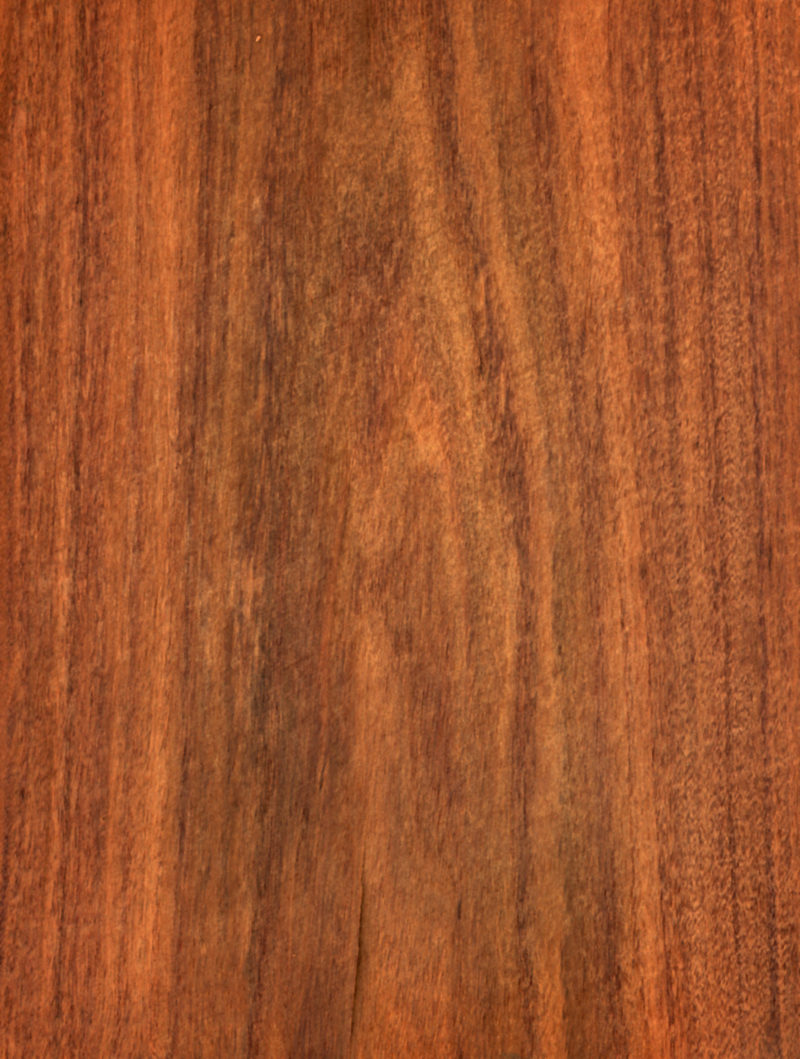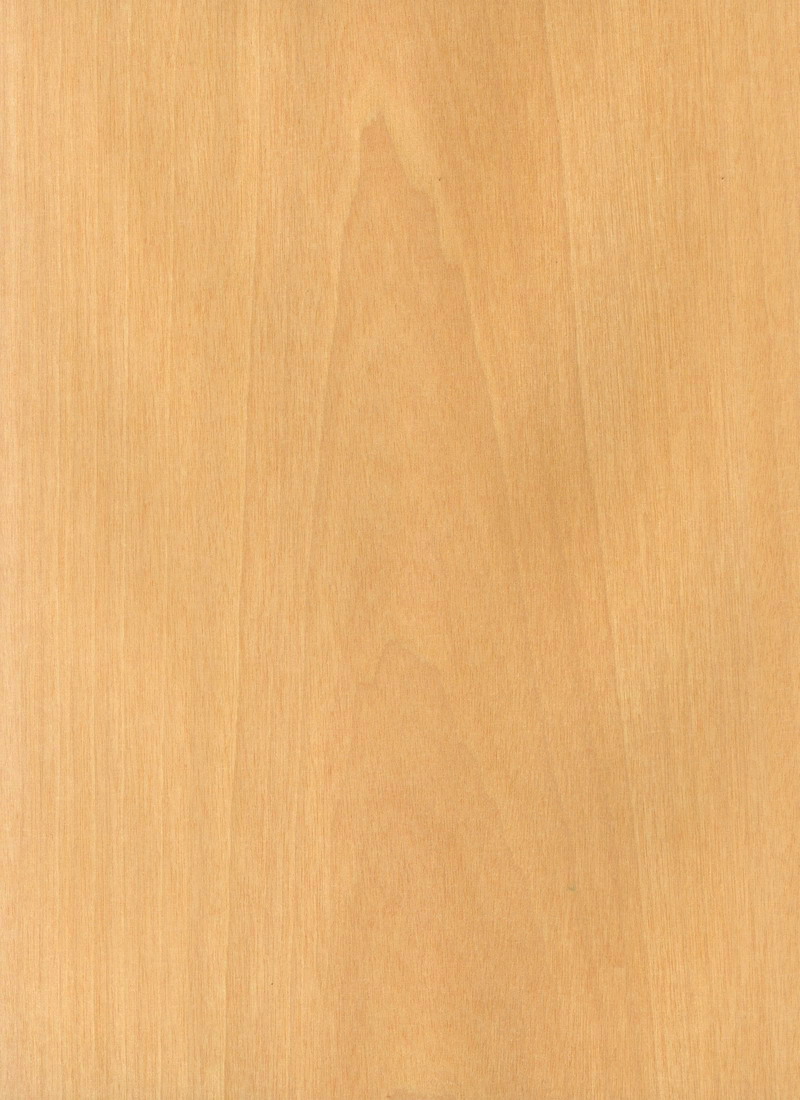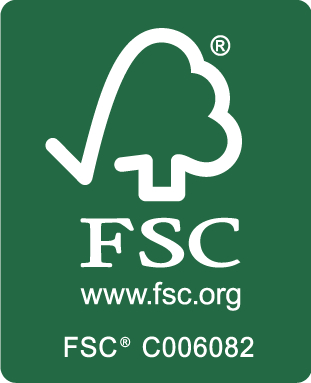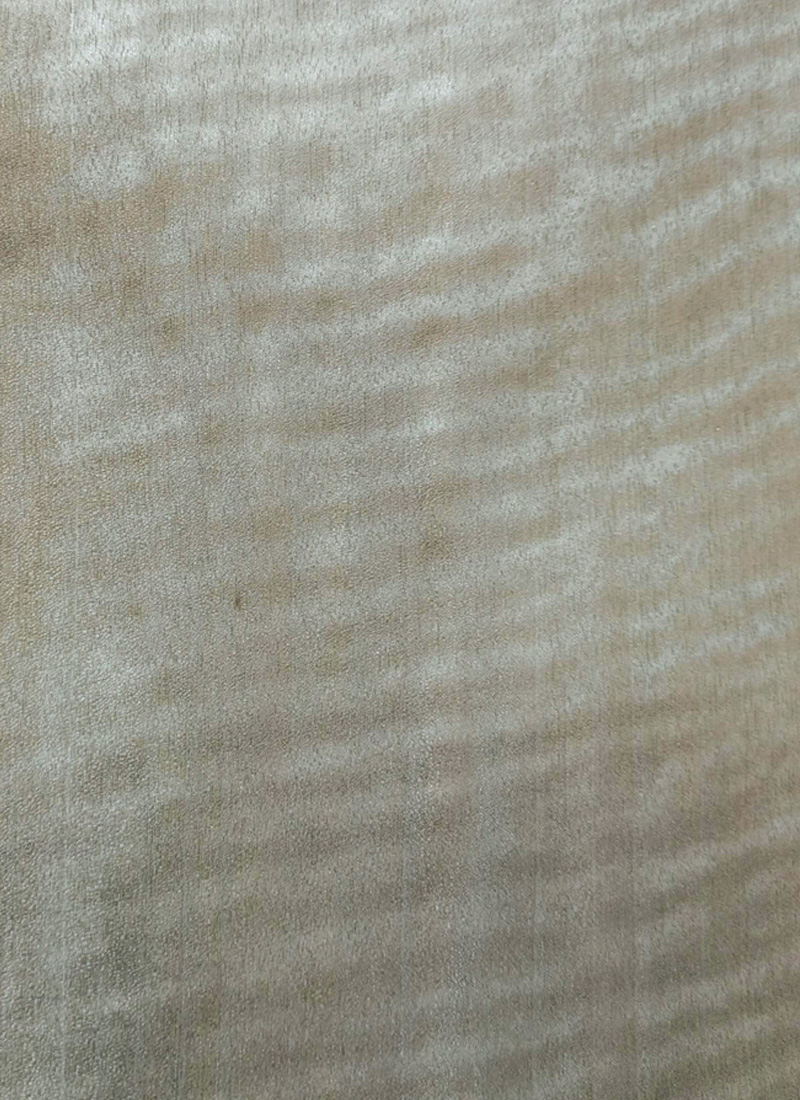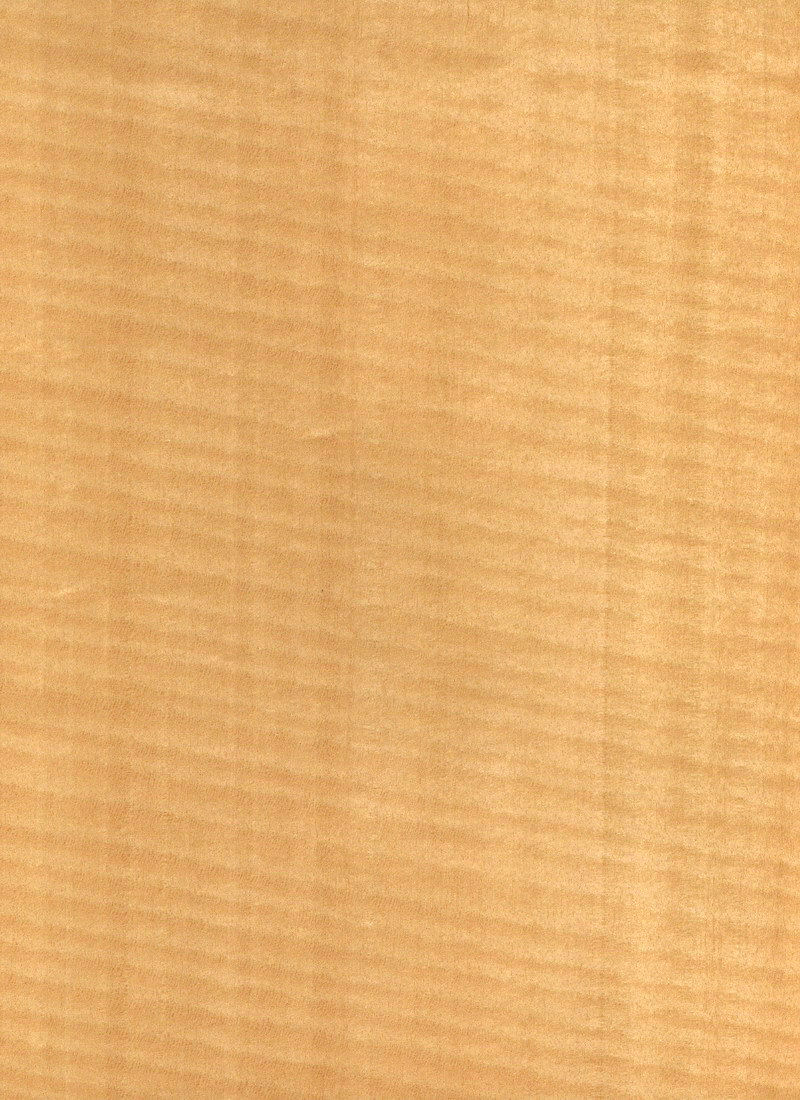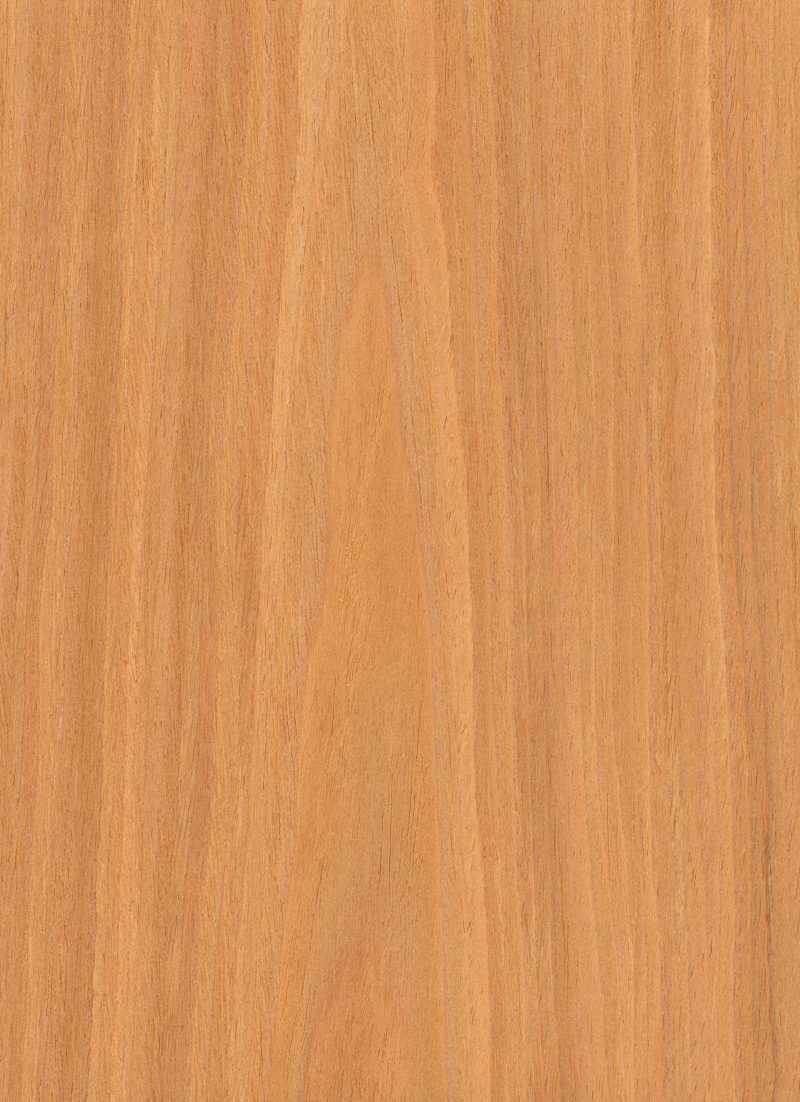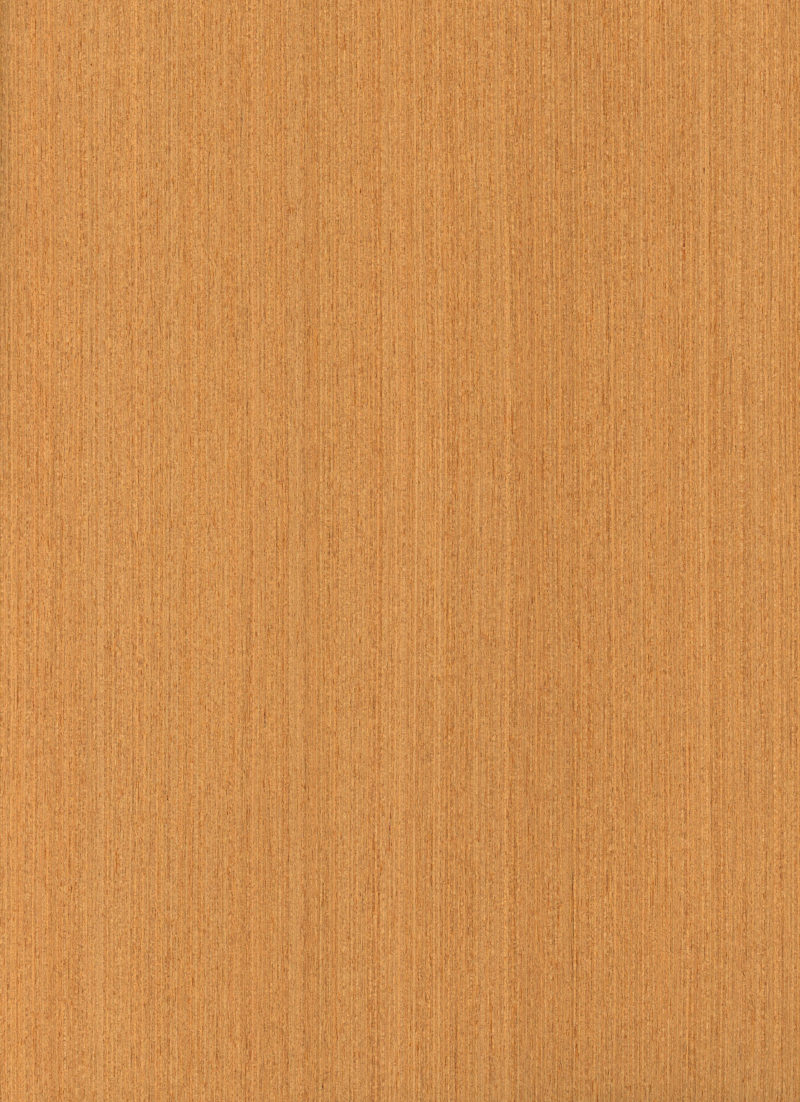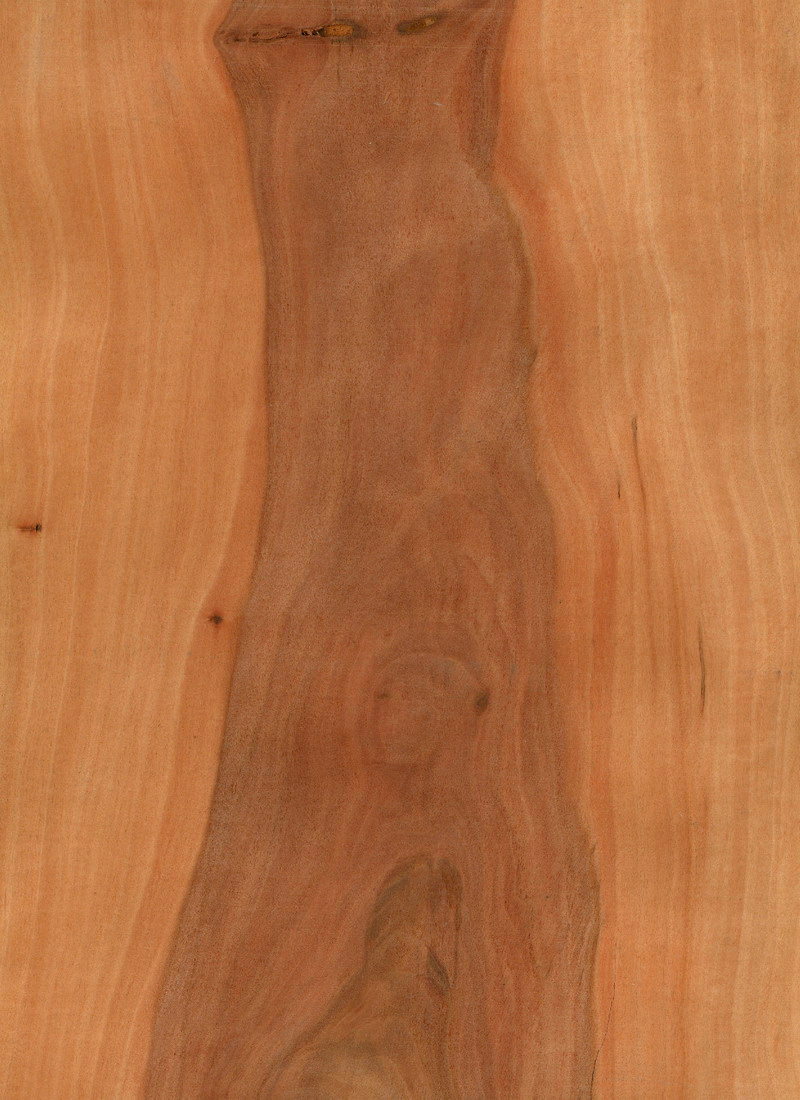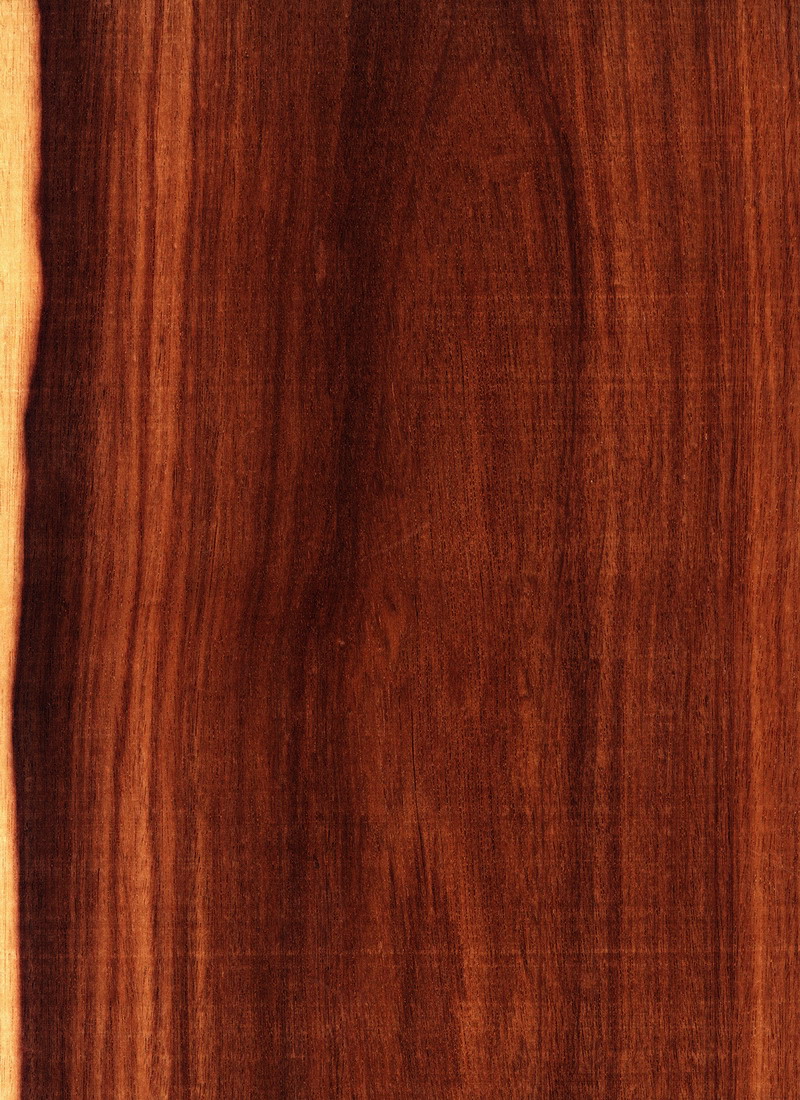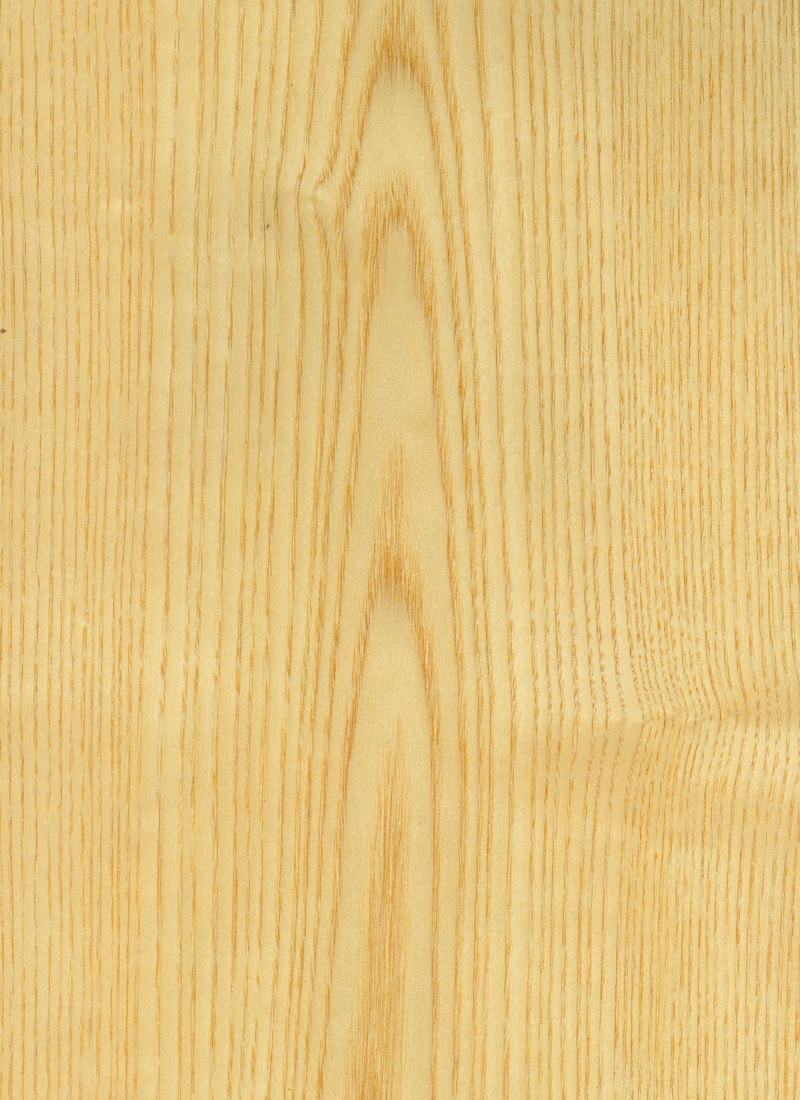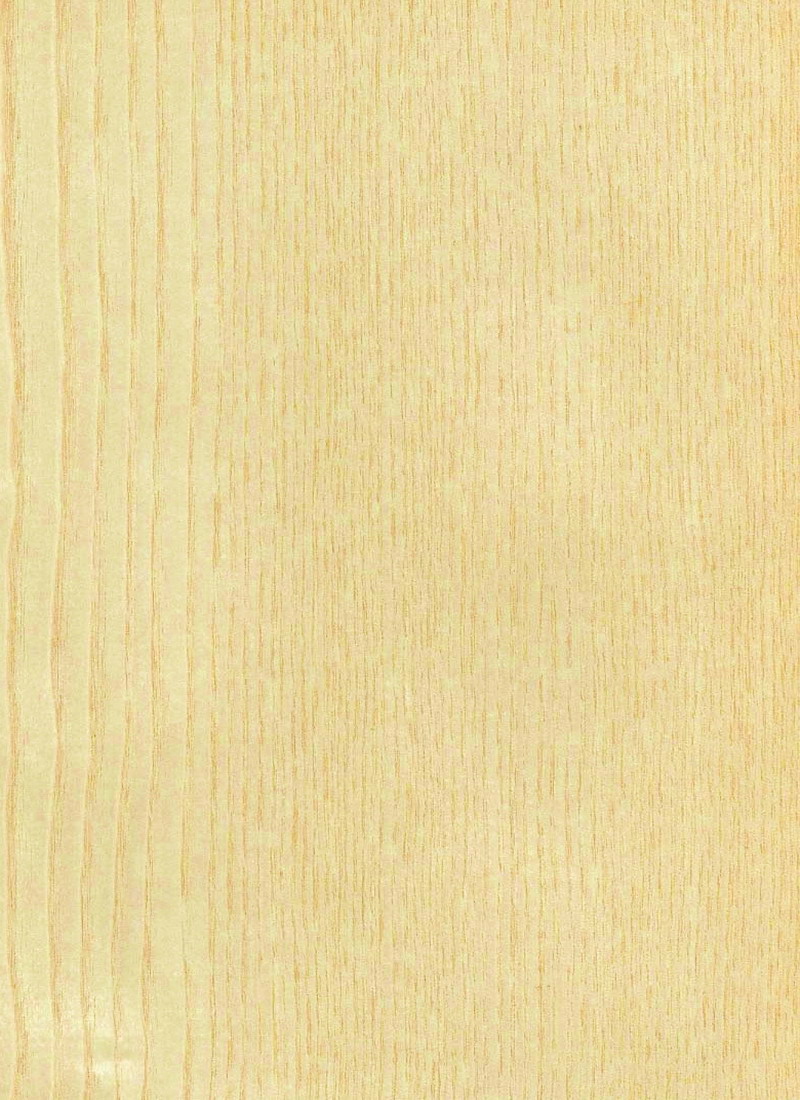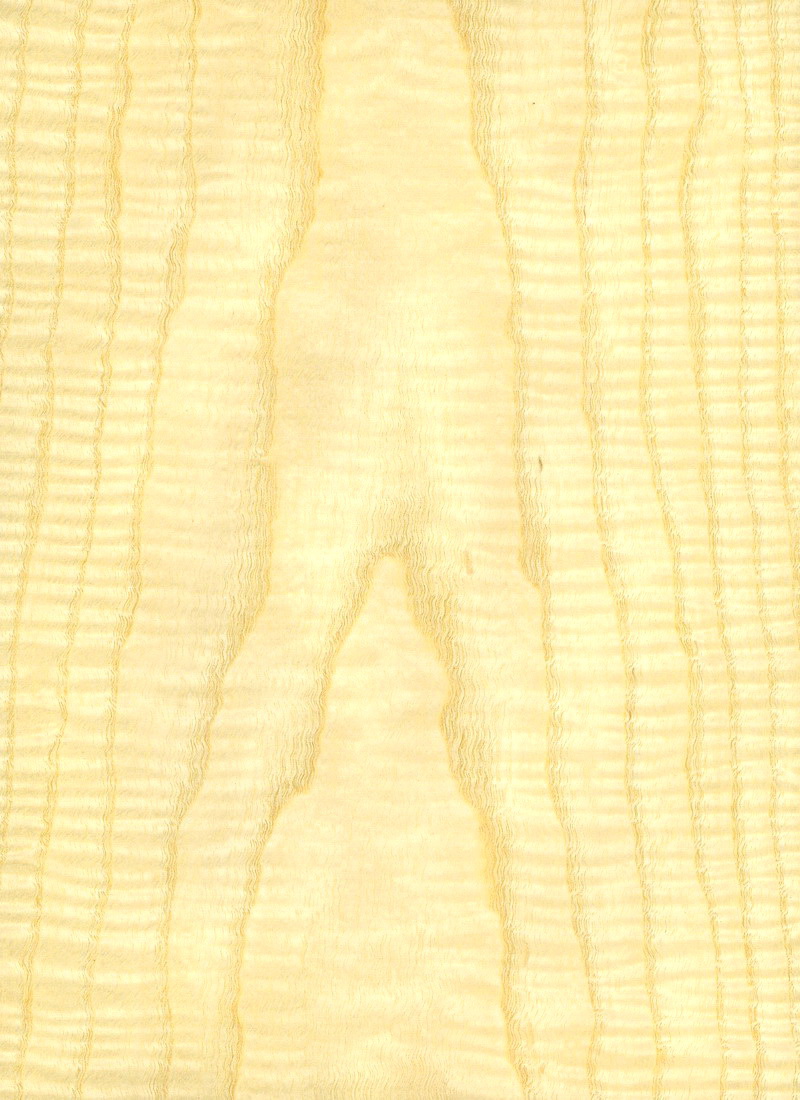Veneer Catalogue
-
 ACACIAx
ACACIAxACACIA
acacia decurrensAcacia quarter cut wood veneer has a warm, inviting appearance. Acacia veneer is known for its rich color variation, which can range from light golden hues to darker browns. Its colors may blend seamlessly or exhibit sharp contrasts within the same piece of veneer, creating a dynamic and visually appealing surface. This wood’s inherent sheen also reflects light beautifully, showcasing its rich colors and grain patterns.
Acacia wood veneer can complement a wide range of design styles, from rustic and traditional to modern and contemporary. Its versatility and timeless appeal make it a top choice for a wide range of projects.
Common Uses for Acacia Quarter Cut Wood Veneer: Architectural panels, millwork, fine furniture, cabinetry, flooring, yacht and aircraft interiors, as well as decorative accents.
Other Name(s): The trees themselves are also known as Early Black Wattle, or Green Wattle.
The Tree: Acacia is a fast-growing tree that is native to Australia. They typically reach heights between 15-50 feet with trunk diameters between 10-20 feet. This species adapts easily to cultivation worldwide, growing very quickly.
A Little History: The flowers are traditionally used to create yellow dye, while the seed pods make green dye. Another product from the tree, wattle gum, can be used in the production of fruit jellies.
Region: Australia & Oceana
[widget id="black-studio-tinymce-5"] -
 AFRORMOSIAx
AFRORMOSIAxAFRORMOSIA
Pericopsis elataOften called African teak, Afrormosia quarter cut wood veneer has a striking visual appeal that enhances any space. Its golden-brown hues radiate natural elegance and create an inviting ambiance wherever it’s used. This wood’s distinct grain patterns, characterized by darker streaks when quarter cut, adds depth and character to furniture, cabinetry, interior décor, and more. Afrormosia may exhibit attractive figure variations such as ribbon-like patterns, mottle, or subtle figuring. Also prized for its durability, stability, and natural luster.
Afrormosia trees are harvested from responsibly managed forests in West Africa, carefully selected to ensure the long-term health of the ecosystem. By opting for Afrormosia veneer, artisans and designers can embrace eco-friendly practices without compromising on quality or aesthetics.
Common Uses for Afrormosia Quarter Cut Wood Veneer: Architectural panels, cabinetry, flooring, furniture and interior woodwork, as well as interior boat and yacht fixtures and fittings.
Other Name(s): African Teak, Golden Teak. Also commonly spelled as “Afromosia” without the second ‘r.’
The Tree: Afrormosia trees typically grow to a height of 160 feet, with trunk diameters ranging from 4 to 5 feet. Some larger trees may have a clear trunk without branches for up to 100 feet.
A Little History: Often an alternative for Teak in many industries, although it is not closely related to genuine Teak.
Region: Africa
[widget id="black-studio-tinymce-5"] -
 AFRORMOSIA REALTECx
AFRORMOSIA REALTECxAFRORMOSIA REALTEC
pericopsis elataFigured Afrormosia Realtec quarter cut wood veneer is prized for its durability, stability, and natural luster. This veneer displays golden-brown hues along with continual figure—primarily the highly sought-after fiddleback figure and ribbon.
This consistent figure is the result from embossing natural Afrormosia veneer—both the desired figure and color remain constant throughout large Realtec sequences. Architectural veneer logs that have the most valued natural figure—fiddleback—are very rare. Through the Realtec manufacturing process, designers, architects, and other project leaders have steady access to highly desired figured Afrormosia veneer coupled with economical pricing and a large availability of inventory.
Common Uses for Figured Afrormosia Quarter Cut Wood Veneer: Because of its consistency, Realtec Afrormosia is ideal for large architectural projects, as well as for repeated and extended production.
Other Name(s): African Teak, Golden Teak. Also commonly spelled as “Afromosia” without the second ‘r.’
The Tree: Afrormosia trees typically grow to a height of 160 feet, with trunk diameters ranging from 4 to 5 feet. Some larger trees may have a clear trunk without branches for up to 100 feet.
A Little History: Often an alternative for Teak in many industries, although it is not closely related to genuine Teak.
Region: Africa
[widget id="black-studio-tinymce-5"] -
 AKOx
AKOxAKO
antiaris africanaAlso called African Satinwood, Ako quarter cut wood veneer is admired for its attractive appearance and natural luster. This wood is typically a light to medium golden-yellow with occasional darker streaks or veins. These golden hues and distinctive grain pattern can add a touch of elegance and sophistication to any space. Ako veneer also has a relatively smooth surface and is known for its durability and stability, making it suitable for use in veneer applications where strength and resilience are important factors.
Our African Satinwood veneer inventory is sourced from responsibly managed forests and certified suppliers. Due to environmental concerns associated with deforestation, it’s essential to verify your source of wood and choose suppliers committed to sustainable practices.
Common Uses for Ako Quarter Cut Wood Veneer: Aircraft, architectural panels and millwork, cabinetry, and furniture. Although not as common of a choice as other veneers, Ako is also occasionally used in the construction of musical instruments.
Other Name(s): African Satinwood.
The Tree: A fast-growing and large shade tree native to Africa. Typically reaches heights between 75-150 feet, with trunk diameters between 2-5 feet.
A Little History: Traditionally one of several species used to make clothing out of its fibers. In fact, Ako is sometimes called the bark cloth tree and cloth clothing is still made today.
Region: Africa
[widget id="black-studio-tinymce-5"] -
 ALDER EUROPEANx
ALDER EUROPEANxALDER EUROPEAN
alnus glutinosaEuropean Alder flat cut wood veneer typically has a light color with subtle variations in tone, ranging from creamy white to pale yellow, or light brown. Its grain pattern is often straight and fine; straighter trees will produce more figure. The texture of European Alder veneer is generally smooth and even, lending itself well to a variety of finishes—from natural to stained or even painted.
One of the distinctive features of European Alder veneer is its ability to take on finishes beautifully. When finished with a clear coat, it highlights the natural grain patterns and imparts a warm, inviting glow to the surface. Alternatively, staining the veneer enhances its color and adds depth, allowing designers to achieve a range of aesthetic effects to suit their projects.
Common Uses for European Alder Flat Cut Wood Veneer: Architectural panels and millwork, as well as cabinetry, furniture, and musical instruments.
Other Name(s): Black Alder, Common Alder.
The Tree: A medium size tree that thrives in wet climates, growing to a height of up to 100 feet.
A Little History: Alder European is quite durable underwater. In fact, these trees have been used for piles and supports, most notably throughout Venice, Italy.
Region: Europe
[widget id="black-studio-tinymce-5"] -
 ALDER REDx
ALDER REDxALDER RED
alnus rubraRed Alder flat cut wood veneer offers a warm and inviting aesthetic that complements a wide range of styles, from rustic and traditional to contemporary and modern. Red Alder exhibits a range of warm reddish-brown tones; these shades can vary depending on factors such as the age of the tree and the specific part of the log from which the veneer is cut. The coloration ranges from light pinkish-red to deeper, richer shades of reddish-brown.
This species often features a straight, uniform grain pattern, sometimes with occasional swirls or knots. The grain can be fine to medium in texture, giving the veneer a smooth and consistent appearance.
Common Uses for Red Alder Flat Cut Wood Veneer: Architectural panels and millwork, cabinetry, furniture, and interior woodwork, as well as musical instruments (electric guitar bodies in particular).
Other Name(s): Western Red Alder.
The Tree: These trees can grow to a height of 60-90 feet, however they more regularly reach heights of 35-40 feet, with diameters between only 10-15 inches. Red Alder is fast growing, reaching maturity within 50 years.
A Little History: Considered the most abundant hardwood in the Pacific Northwest region of the U.S; also a commercially important lumber.
Region: North America
[widget id="black-studio-tinymce-5"] -
 AMAPAx
AMAPAxAMAPA
Parahancornia amapaAmapa quarter cut wood veneer is an inviting golden to amber-yellow color, often with hints of orange or reddish-brown undertones. For touches of elegance and sophistication, consider Amapa. Amapa wood veneer may exhibit attractive figure patterns such as ribbon striping or mottling, especially when quartersawn. A clear finish highlights its color and grain patterns while providing durability and protection. This species is a top-notch choice for interior design and high-end architectural projects.
Responsible forestry management, including selective harvesting and reforestation efforts, helps ensure the continued availability of this valuable resource. Only mature trees suitable for veneer production are selectively harvested. This allows younger trees to continue their growth and replenish forests, while maintaining healthy ecosystems.
Common Uses for Amapa Quarter Cut Veneer: Wall paneling, millwork, fine cabinetry and furniture, as well as decorative accents.
Other Name(s): Amapa Amarello or Yellow Amapa.
The Tree: A tall rain forest tree growing over 110 feet tall with trunk widths up to 3 feet.
A Little History: While Yellow Amapa veneer may not be as common as some other species, its availability and use may increase with growing awareness of its unique properties and sustainable sourcing practices within the woodworking and design industries.
Region: South America
[widget id="black-studio-tinymce-5"] -
 AMBOYNA BURLx
AMBOYNA BURLxAMBOYNA BURL
pterocarpus indicusAmboyna burl wood veneer is renowned for its exceptionally rich and vibrant red color, often seen with darker streaks or highlights that enhance its visual appeal. One of the most striking features of Amboyna Burl veneer is its intricate grain patterns and swirling figure, resulting from irregular growths known as burls. When cut, these growths create a mesmerizing and highly decorative look.
Amboyna burl is truly one-of-a-kind, and adds an element of luxury and exclusivity to any application. Its rarity, beauty, and versatility make it a coveted choice for high-end woodworking and interior design projects.
Common Uses for Amboyna Burl Wood Veneer: Architectural panels, fine furniture, musical instruments, yacht and private aircraft interiors, as well as luxury automotive interiors.
The Tree: Native to Malaysia, Indonesia and the Philippines. Amboyna is a large tree growing 100-130 feet in height, with trunk widths up to 7 feet.
A Little History: Burl veneer production starts with the selection and harvesting of burls. Burls are found on trunks, or branches, of trees and are irregular growths that occur from either stress or injury. This burl wood is sliced into thin sheets using a large rotary slicer, revealing intricate grain patterns. The veneer sheets are then carefully dried, clipped, and finished to enhance their natural beauty.
Region: Asia
[widget id="black-studio-tinymce-5"] -
 ANDIROBAx
ANDIROBAxANDIROBA
carapa guianensisAndiroba flat cut wood veneer is a handsome medium to dark brown material that displays timeless cathedrals within its grain. Although Andiroba is not a part of the Mahogany family, this veneer is quite similar in appearance with its rich color, grain structure, natural luster, and occasional figuring that is prominent in many Mahoganies. Because of this, designers may consider this species as an economical Mahogany substitute for a wide range of projects calling on a warm and inviting, yet elegant, appearance.
Our Andiroba veneer inventory is sourced from responsibly managed forests and certified suppliers. Due to environmental concerns associated with deforestation, it’s essential to verify your source of wood and choose suppliers committed to sustainable practices.
Common Uses for Andiroba Flat Cut Wood Veneer: Architectural panels and millwork, high-end furniture, and decorative cabinetry are all favored applications.
Other Name(s): Crabwood.
The Tree: Andiroba grows in tropical rain forests along the edges of rivers within the Amazon. This tree is capable of reaching 170 feet in height and having trunks 4-6 feet in diameter.
A Little History: Still used in traditional indigenous medicine in Brazil and other countries surrounding the Amazon. The oil from the seeds allegedly treats multiple conditions, including infections.
Region: South America
[widget id="black-studio-tinymce-5"] -
 ANDIROBAx
ANDIROBAxANDIROBA
carapa guianensisAndiroba quarter cut wood veneer ranges in color from lighter reddish browns to golden browns, complemented by darker stripes. The quartersawn grain is typically straight and can also have ribbon figure, similar to what is desirable in many Mahoganies. Although Andiroba is not a part of the Mahogany family, the veneer is quite similar in appearance with its rich color, grain structure, and natural luster. Because of this, designers may consider Andiroba veneer as an economical Mahogany substitute for a wide range of projects calling on a warm and inviting, yet elegant, appearance.
Our Andiroba veneer inventory is sourced from responsibly managed forests and certified suppliers. Due to environmental concerns associated with deforestation, it’s essential to verify your source of wood and choose suppliers committed to sustainable practices.
Common Uses for Andiroba Quarter Cut Wood Veneer: Architectural panels and millwork, boat interiors, flooring, doors, and furniture.
Other Name(s): Crabwood.
The Tree: Andiroba grows in tropical rain forests along the edges of rivers within the Amazon. This tree is capable of reaching 170 feet in height and having trunks 4-6 feet in diameter.
A Little History: Still used in traditional indigenous medicine in Brazil and other countries surrounding the Amazon. The oil from the seeds allegedly treats multiple conditions, including infections.
Region: South America
[widget id="black-studio-tinymce-5"] -
 ANGICOx
ANGICOxANGICO
Anadenanthera colubrinaAngico flat cut wood veneer displays an earthy, contrasting color palette, reminiscent of the Rosewood species (although it is not a relative). In fact, we consider this species as a highly suitable alternative for Santos Rosewood. Typically flat cut, Angico has rich reddish brown heartwood with slightly darker cathedrals. It can also display pinks, yellows, and lighter brown tones, making it overall a very colorful and vibrant species.
Angico’s natural luster and fine to medium grain coupled with its array of colors and appealing patterns make it a fine choice for creating visually striking interior spaces.
Common Uses for Angico Flat Cut Wood Veneer: Architectural millwork, cabinetry and furniture, as well as luxury yacht and aircraft interiors.
The Tree: Angico is a large tree with a wide growth range found all over the world, and especially in South America and India. Angico typically reaches heights up to 100 feet with trunk diameters around four feet. Because the bole is usually clear of branches up to 50 feet, Angico is an ideal timber for architectural veneer use.
A Little History: Its timber has various uses within its native regions, most notably structural uses such as heavy duty flooring and mine timbers.
Region: South America
[widget id="black-studio-tinymce-5"] -

 ANIGREx
ANIGRExANIGRE
aningeria superbaAnigre flat cut wood veneer is generally light to medium creamy yellow-brown or golden yellow, sometimes seen with a slight pink hue. When flat cut, this species features beautiful cathedral and is overall quite uniform and effortlessly sophisticated. Due to its light color and naturally soft aesthetic, Anigre can create a bright and inviting environment wherever it’s used. And highly figured fiddleback and block mottle logs can elevate architectural projects to the next level.
Because of its light palette, fine grain, and velvety texture, Anigre can easily be dyed to visually replicate cherry veneer. In fact, Anigre can be dyed to mimic the appearance of many other wood species or to achieve a variety of different colors.
Overall, Anigre is valued for its light, neutral color, fine grain, and versatility, making it a preferred choice for many architects and designers.
Common Uses for Anigre Flat Cut Wood Veneer: Architectural panels, millwork, furniture, and both interior boat and yacht design. Because of its tonal qualities, this species is also used for musical instruments, especially guitars and pianos.
Other Name(s): Also commonly spelled as Anegre, or Aniegre.
The Tree: Height varies but generally reaches 180 feet with a trunk diameter of 3-4 feet. This tree also usually has a clear bole up to 80 feet.
Region: Africa
[widget id="black-studio-tinymce-5"]
-

 ANIGREx
ANIGRExANIGRE
aningeria superbaAnigre quarter cut wood veneer is generally light to medium creamy yellow-brown or golden yellow, sometimes seen with a slight pink hue. Due to its light color and naturally soft aesthetic, Anigre can create a bright and inviting environment wherever it’s used. And highly figured fiddleback and block mottle logs can elevate architectural projects to the next level.
Also because of its light palette, fine grain, and velvety texture, Anigre can easily be dyed to visually replicate cherry veneer, another naturally elegant and welcoming species choice. This is especially true for quarter cut Anigre as it has more available widths than cherry, generally speaking.
Overall, Anigre is valued for its light, neutral color, fine grain, and versatility, making it a preferred choice for many architects and designers.
Common Uses for Anigre Quarter Cut Wood Veneer: Architectural panels, millwork, furniture, and both interior boat and yacht design. Because of its tonal qualities, this species is also used for musical instruments, especially guitars and pianos.
Other Name(s): Also commonly spelled as Anegre, or Aniegre.
The Tree: Height varies but generally reaches 180 feet with a trunk diameter of 3-4 feet. This tree also usually has a clear bole up to 80 feet.
Region: Africa
[widget id="black-studio-tinymce-5"]
-

 ANIGRE FIGURED (FIDDLEBACK)x
ANIGRE FIGURED (FIDDLEBACK)xANIGRE FIGURED (FIDDLEBACK)
aningeria superbaFigured Anigre quarter cut wood veneer is generally light to medium creamy yellow-brown or golden yellow, sometimes seen with a slight pink hue. Due to its light color and naturally soft aesthetic, Anigre can create a bright and inviting environment wherever it’s used. The highly figured fiddleback and block mottle patterns in Anigre veneer can help elevate architectural projects, adding luxury and distinction to any space.
Because of its light palette, fine grain patterns, and velvety texture, Anigre can easily be dyed to visually replicate cherry veneer, another naturally elegant and welcoming species choice.
Overall, fiddleback or block mottle figured Anigre wood veneer is highly valued and sought after. Its light color palette, fine grain, and stunning patterns make it a preferred choice for high-end interior architecture and design.
Common Uses for Figured Anigre Wood Veneer: Architectural panels, millwork, high-end furniture, and luxury interior boat and yacht design. Because of its tonal qualities, this species is also used for musical instruments, especially guitars and pianos.
Other Name(s): Also commonly spelled as Anegre, or Aniegre.
The Tree: Height varies but generally reaches 180 feet with a trunk diameter of 3-4 feet. This tree also usually has a clear bole up to 80 feet.
Region: Africa
[widget id="black-studio-tinymce-5"]
-
 ANIGRE GREY DYEDx
ANIGRE GREY DYEDxANIGRE GREY DYED
aningeria superbaDyed grey Anigre quarter cut veneer offers a sophisticated slate grey tint with pronounced, striking figure. Dyed grey Anigre veneer is enhanced with an aniline dye, further highlighting its beautiful grain. This versatile species can be dyed to mimic the appearance of other woods or to achieve a variety of different colors. The highly figured fiddleback and block mottle patterns in Anigre wood veneer add a touch of luxury and distinction to architectural projects, elevating any space.
Fiddleback or block mottle figured Anigre veneer is highly valued and sought after in the architectural wood industry. The contemporary, cool-toned slate grey color, combined with Anigre’s fine grain, striking patterns, and the wood’s versatility, makes it a preferred choice for high-end interior architecture and design.
Common Uses: Dyed grey Anigre veneer is used in various applications. Architectural panels and millwork, high-end furniture, and luxury interior boat and yacht design are common uses. Its tonal qualities also make it popular for crafting musical instruments, particularly guitars and pianos.
Other Name(s): Also commonly spelled as Anegre, or Aniegre.
The Tree: Height varies but generally reaches 180 feet with a trunk diameter of 3-4 feet. This tree also usually has a clear bole up to 80 feet.
Region: Africa
[widget id="black-studio-tinymce-5"] -

 ANIGRE REALTECx
ANIGRE REALTECxANIGRE REALTEC
aningeria superbaAnigre Realtec quarter cut wood veneer has consistent fiddleback figure and is a creamy yellow or tan with some pink tones. The grain is straight, sometimes wavy and mottled. Also has a fine, lustrous texture. Also commonly spelled as Anegre.
Common Uses for Anigre Realtec Quarter Cut Wood Veneer: Architectural panels and mill work, cabinetry, doors, musical instruments, flooring, furniture and interior woodwork, as well as boat and yacht design.
Other Name(s): Also commonly spelled as Anegre, or Aniegre.
The Tree: Height varies but generally reaches 180 feet with a trunk diameter of 3-4 feet. This tree also usually has a clear bole up to 80 feet.
Region: Africa
[widget id="black-studio-tinymce-5"]
-

 ANIGRE VTEC FLAT CUTx
ANIGRE VTEC FLAT CUTxANIGRE VTEC FLAT CUT
triplochiton scleroxylonInnovative, eco-friendly, timeless.
We offer Anigre Vtec in a flat cut grain, in addition to traditional Anigre wood veneer. Anigre Vtec flat cut is 100% wood. Also known as Reconstituted Anigre or Anigre Recon Veneer.
25″ x 99″ Sheet Product ID: 33854
Please note that this pattern is available in 50″ widths as well; a small processing fee is added for production.
About Anigre Reconstituted Veneer
Anigre Recon veneer is made from Ayous, which is legally harvested with SCS certification, or from plantation grown Poplar or Basswood for close-grain patterns.
Years from now, you can match your original purchase in exact color, grain structure and pattern – an excellent choice when matching large quantities of desks, doors, paneling, and more. Our engineering process is also eco-friendly. We can replicate patterns (such as ebony or teak) from fast growth trees. You get the exquisite look of a unique veneer at an affordable price.
FSC® 100% available upon request for all patterns, subject to availability and possible extended lead times.
Region: Asia
[widget id="black-studio-tinymce-5"]
-

 ANIGRE VTEC QUARTER CUTx
ANIGRE VTEC QUARTER CUTxANIGRE VTEC QUARTER CUT
triplochiton scleroxylonInnovative, eco-friendly, timeless.
We offer Anigre Vtec in a quarter cut grain, in addition to traditional Anigre wood veneer. Anigre Vtec quarter cut is 100% wood. Also known as Reconstituted Anigre or Recon Veneer.
25″ x 99″ Sheet Product ID: 33842
Please note that this pattern is available in 50″ widths as well; a small processing fee is added for production.
About Anigre Reconstituted Veneer
Anigre Recon veneer is made from Ayous, which is legally harvested with SCS certification, or from plantation grown Poplar or Basswood for close-grain patterns.
Years from now, you can match your original purchase of Anigre Vtec wood veneer in exact color, grain structure and pattern – an excellent choice when matching large quantities of desks, doors, paneling, and more. Our engineering process is also eco-friendly. We can replicate patterns (such as ebony or teak) from fast growth trees. You get the exquisite look of a unique veneer at an affordable price.
FSC® 100% available upon request for all patterns, subject to availability and possible extended lead times.
Region: Asia
[widget id="black-studio-tinymce-5"]
-
 APPLEx
APPLExAPPLE
malus sylvestrisApple flat cut wood veneer has pink and brown tones. The grain is straight and has even texture.
Common Uses for Flat Cut Apple Wood Veneer: Architectural panels, cabinetry, doors, furniture, interior woodwork, musical instruments.
Other Name(s): Wild Apple.
The Tree: Height varies based on location, generally reaching heights of 20-30 feet. This tree thrives in moist and well-drained soil.
A Little History: Romans introduced Malus sylvestris into Britain; it is a wild relative of the species grown for fruit. Wild Apple is an excellent source of pollination for the species that grow edible fruit.
Region: Europe
[widget id="black-studio-tinymce-5"] -
 ARRUDAx
ARRUDAxARRUDA
spondias tuberosaArruda flat cut wood veneer has a coarse texture. Heartwood is chocolate to violet brown to violet, streaked with black or golden brown.
Common Uses for Flat Cut Arruda Wood Veneer: Architectural panels, millwork, cabinetry, doors and furniture, as well as both yacht and aircraft interiors.
Other Name(s): Also known as Umbu or Imbu.
The Tree: Native to northeast Brazil, Arruda is a slow growing tree, typically reaching heights up to 20 feet.
Region: South America
[widget id="black-studio-tinymce-5"] -

 ASHx
ASHxASH
fraxinus americanaAsh flat cut wood veneer sapwood is nearly white, with wide and even texture. Its heartwood is grayish brown and light brown to pale yellow. This cut is available in both cathedral and straight grain pattern.
Common Uses for Flat Cut Ash Wood Veneer: Architectural panels, cabinetry, flooring, furniture, interior woodwork, and shipbuilding.
Other Name(s): White Ash.
The Tree: This is the largest of the 18 ash species native to the United States. It grows 70-80 feet in height with diameters between 2-3 feet.
A Little History of Ash Wood: Used extensively for baseball bats and other sporting and athletic equipment such as boat oars.
Region: North America
[widget id="black-studio-tinymce-5"]
-

 ASHx
ASHxASH
fraxinus americanaAsh quarter cut wood veneer sapwood is nearly white, with wide and even texture. Its heartwood is grayish brown and light brown to pale yellow.
Common Uses for Quarter Cut Ash Wood Veneer: Architectural panels, cabinetry, flooring, furniture and interior woodwork, as well as shipbuilding.
Other Name(s): White Ash.
The Tree: This is the largest of the 18 ash species native to the United States. It grows 70-80 feet in height with diameters between 2-3 feet.
A Little History of Ash Wood: Used extensively for baseball bats and other sporting and athletic equipment such as boat oars.
Region: North America
[widget id="black-studio-tinymce-5"]
-

 ASH EUROPEAN FIGURED (FIDDLEBACK)x
ASH EUROPEAN FIGURED (FIDDLEBACK)xASH EUROPEAN FIGURED (FIDDLEBACK)
fraxinus excelsiorEuropean Ash flat cut figured wood veneer is creamy white to pale tan. The grain has a pronounced and, often wavy, cathedral.
Common Uses: Architectural panels, musical instruments, as well as furniture and marquetry.
Other Names: Olive Ash, Common Ash, Italian Olive Ash.
The Tree: Depending on soil and climate, European Ash can grow 80-100 feet with diameters between 2-5 feet.
A Little History: During WWI, European Ash was used to construct aircraft. This wood was ideal for the structure of aircraft because of its flexibility and strength.
Region: Europe
[widget id="black-studio-tinymce-5"]
-

 ASH EUROPEAN FIGURED (FIDDLEBACK)x
ASH EUROPEAN FIGURED (FIDDLEBACK)xASH EUROPEAN FIGURED (FIDDLEBACK)
fraxinus excelsiorEuropean Ash quarter cut figured wood veneer is creamy white to pale tan. The straight grain has a pronounced appearance with fiddleback figure. Fiddleback is clearly visible with regular streaks running across the grain.
Common Uses: Architectural panels, musical instruments, as well as furniture and marquetry.
Other Names: Olive Ash, Common Ash.
The Tree: Depending on soil and climate, can grow 80-100 feet with diameters between 2-5 feet.
A Little History: During WWI, European Ash wood was used to construct aircraft. This wood was ideal for the structure of aircraft because of its flexibility and strength.
Region: Europe
[widget id="black-studio-tinymce-5"]

